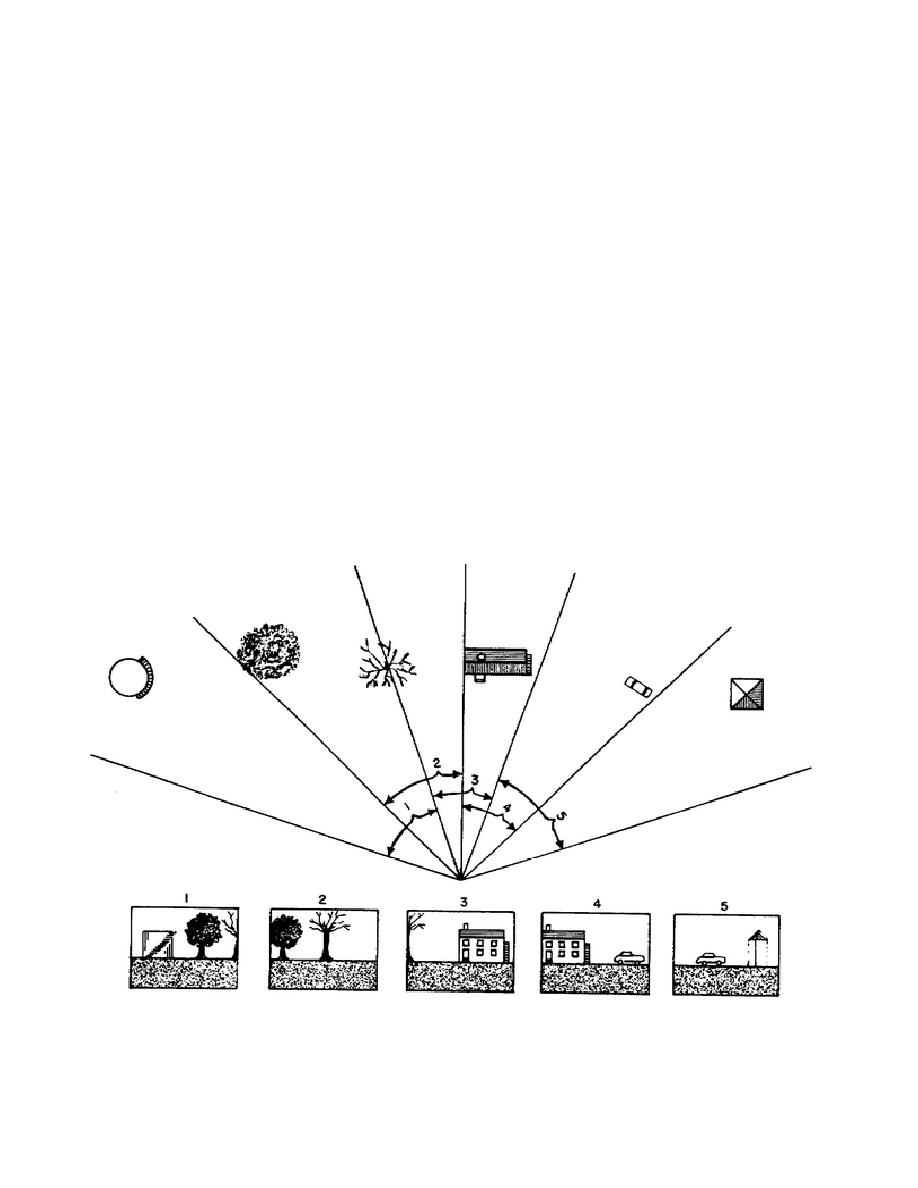
(2) The second, known as a moving panoramic, requires production of
individual exposures from camera viewpoints that are generally parallel to the
terrain feature and separated by the same distance. Figure 1-2 illustrates the
technique for a swing panoramic and figure 1-3 shows procedures for a moving
panoramic.
b. Engineers find aerial views and swing panoramics especially useful for
construction planning. Tactical commanders have many uses for panoramics, a few
of which are listed below.
(1) Terrain identification for assault troops.
(2) Spotting enemy positions.
(3) Map orientation and updating.
(4) Identification of coordinates in artillery fire control centers and
(5) Orientation of new personnel to enemy and friendly areas.
(6) Liaison with adjacent units.
(7) Reverse panoramics: That is, panoramas of our own position as seen
through the eyes of the enemy, to check friendly cover, concealment and
camouflage, as well as to determine possible avenues of enemy approach.
Figure 1-2.
Procedures for a swing panoramic
8


 Previous Page
Previous Page
